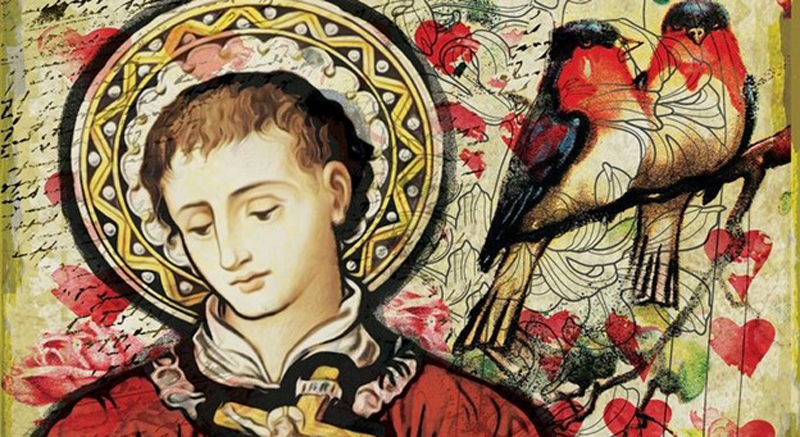(First died 269 AD; second died circa 346 AD)
The feast of St. Valentine has become universal. Even non-Christians celebrate with messages and gifts to loved ones.
But did you know there were two St. Valentines? Here are their stories.
Our first St. Valentine was a Roman priest of the 3rd century. Intrigued by his sanctity, the emperor Claudius Gothicus summoned him to his court. Try as he might, the emperor could not entice the saintly priest to worship the Roman gods. For Valentine there was only one true God and Jesus Christ, His Son, the only hope for a better life both among the living and the dead.
Claudius, being unsuccessful, gave the challenge of converting Valentine to a Roman nobleman named Asterius, who was famous for his “mellifluous arguments.”
Asterius had a daughter who was blind. Valentine prayed over her and she regained her sight. At this, Asterius and his whole family converted to Christianity.
When Claudius heard of who wound up converting whom, he became furious. He had Valentine beheaded along the road known as the Via Flaminia in Rome. The martyr was buried nearby, and a church eventually was raised there in his honor.
A legend has it that Claudius had issued a decree that banned marriages and families for his soldiers. He believed that unattached men made better fighters when they had no familial distractions. Priests were therefore banned from performing marriages. Valentine continued to join couples in matrimonial ceremonies. As a result, he was condemned to die.
Some would have it that Valentine wrote notes to his friends from his prison and would sign them, “Your Valentine.” Church history does not verify this story, but it has served the greeting card industry very well.
The second St. Valentine was the bishop of the central Italian city of Terni and lived about 70 years after the first saint of that name. This Valentine was invited to Rome by the famous rhetorician and philosopher Crato, a teacher of Greek and Latin.
He had a son named Chaeremon, who had a physical deformity that forced him to keep his head between his knees. No doctor had managed to heal him. Crato promised Valentine half of his possessions if he healed his son.
Valentine explained that it would be faith that would cure the boy, not his father’s wealth. Again, this Valentine prayed over the afflicted child and he was cured. Moved by this miracle, Crato and his whole family were baptized by the Bishop, together with three Greek students: Ephebus and Apollonius. Abbondius, as well as Abbondius, another student and son of the prefect of Rome, Furious Placidus.
Infuriated by his son’s renouncement of the Roman gods and conversion, Placidus had the bishop decapitated on the Via Flaminia at night so as not to provoke unrest among the growing Christian community.
After a brief burial on the site of his martyrdom, the three Greek students carried the body of the martyr to Terni and buried him just outside the city. But in Terni, the Consul Lucentius, arrested all three of them and before the populace could free them, had them beheaded as well. When they found out about the execution, the people buried the new martyrs together with Valentine in his tomb.
We can trace the world’s fascination with Valentine to the Benedictine Order that maintained the church of St Valentine in Terni during the Middle Ages and that spread the cult of Valentine’s Day in their monasteries in France and England.
The tradition of his being patron saint of lovers finds its origin in an ancient English text by Geoffrey Chaucer, according to whom birds start mating on Valentine’s Day.
In mid-February, in fact, nature begins to awaken from its winter lethargy, so St. Valentine has become the saint who announces the coming spring – which is why he is sometimes represented holding the sun in his hand.
Adapted by A. J. Valentini from: St. Valentin – Information on the – Vatican News. (n.d.). Vatican News. Retrieved Feb. 9, 2021, from https://www.vaticannews.va/en/saints/02/14/st–valentin–martyr-on-the–via-flaminia.html
